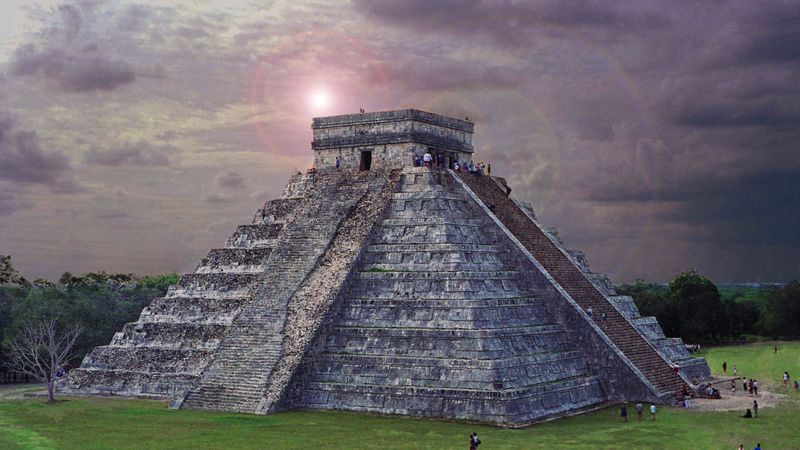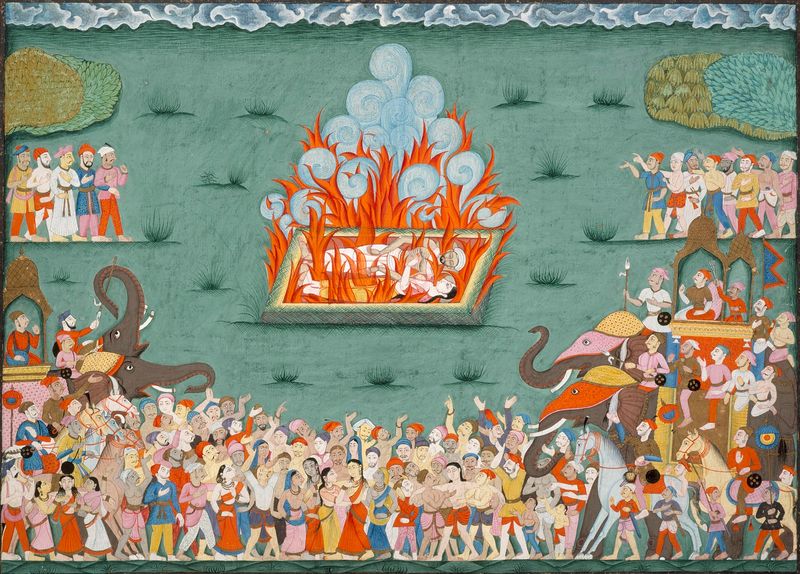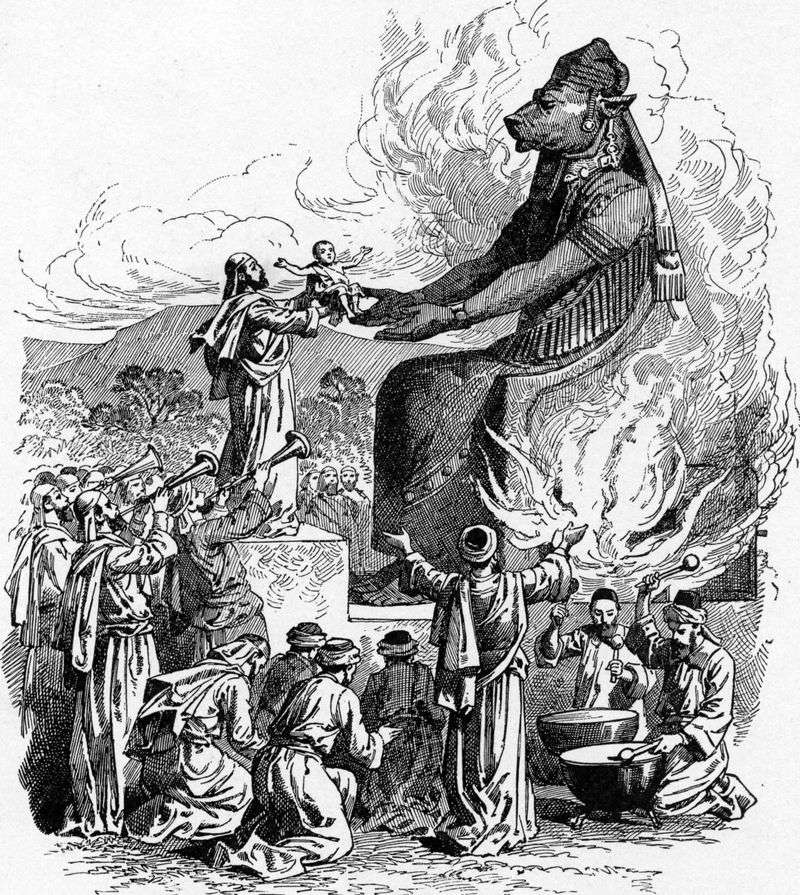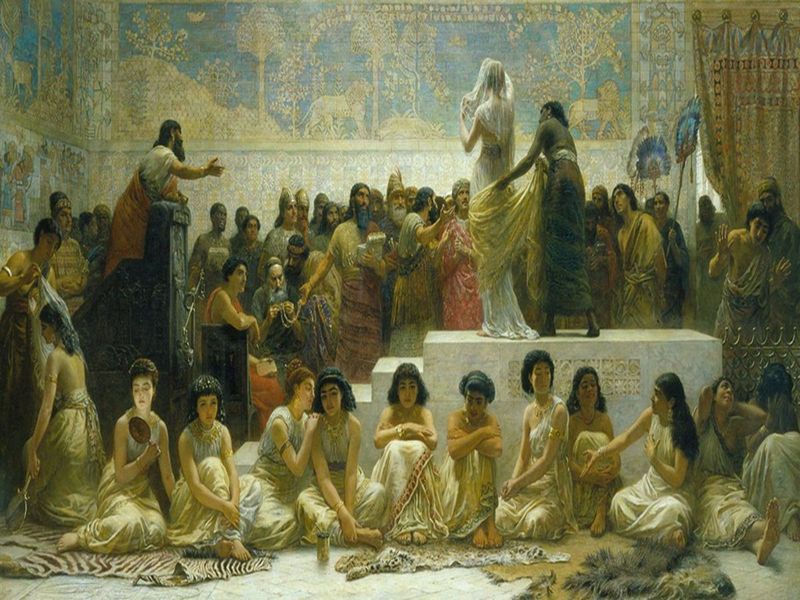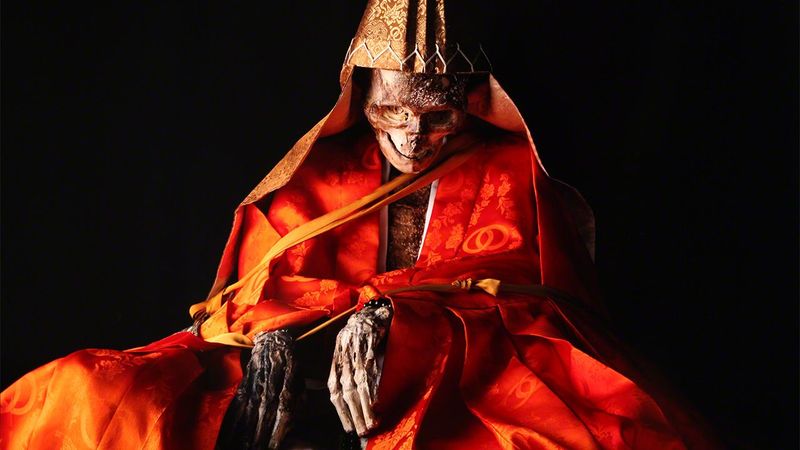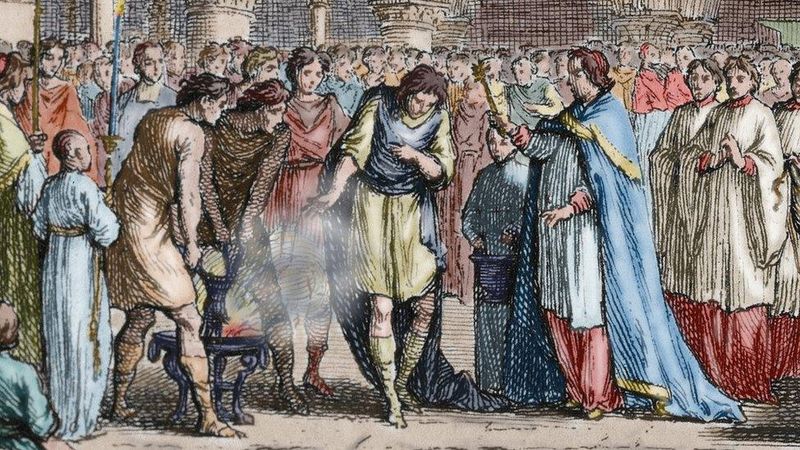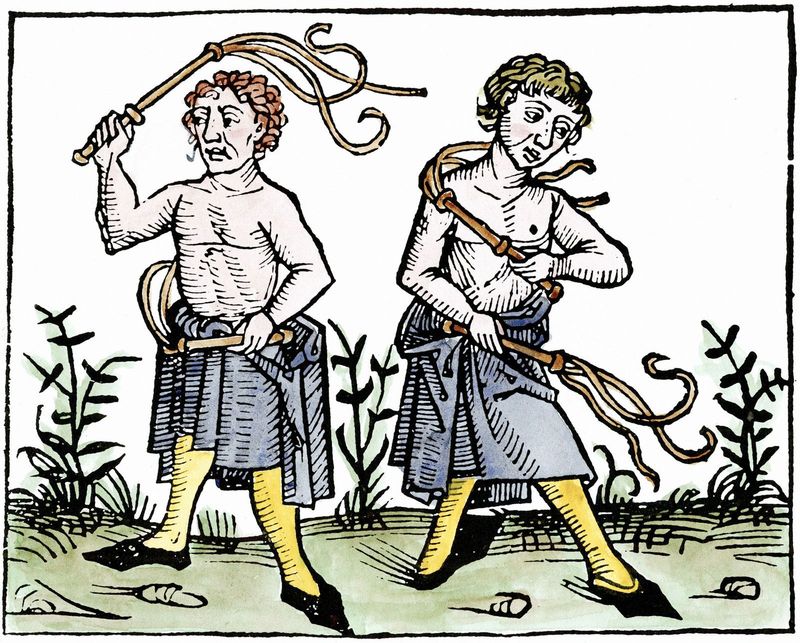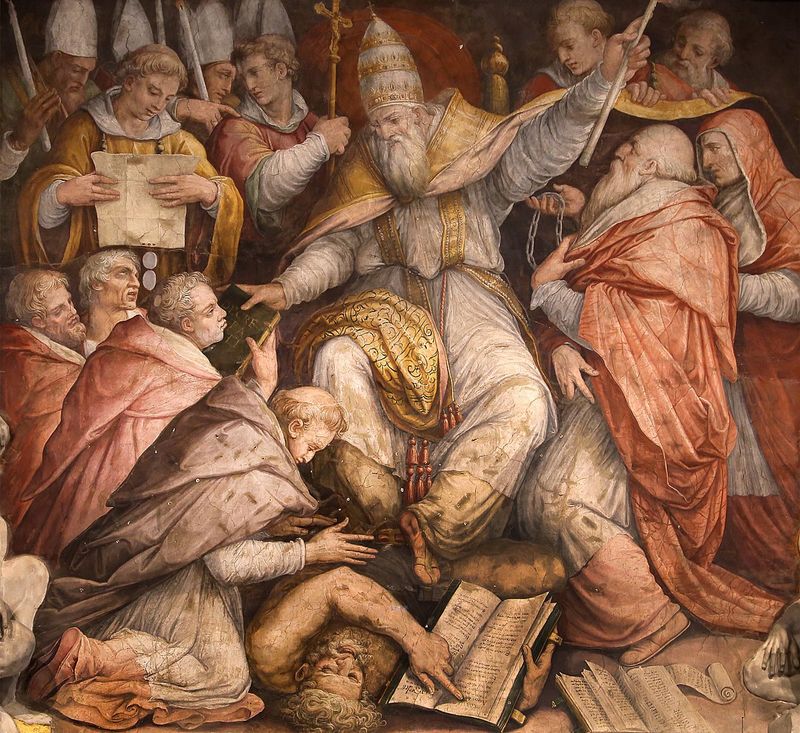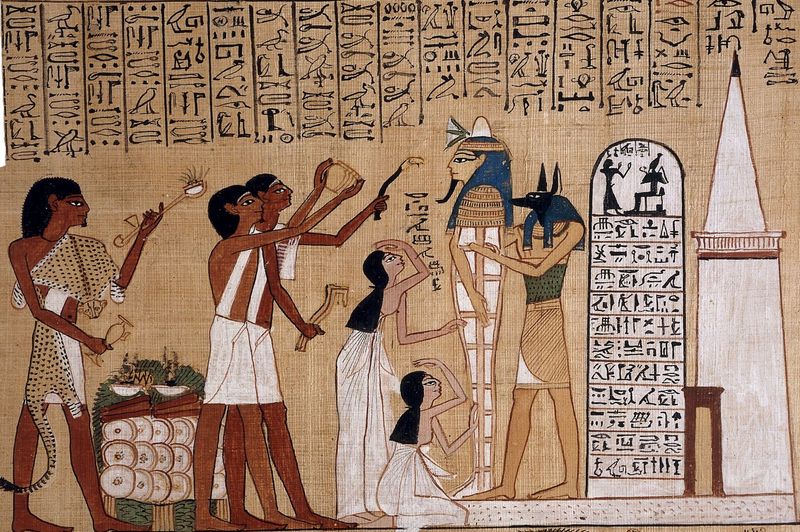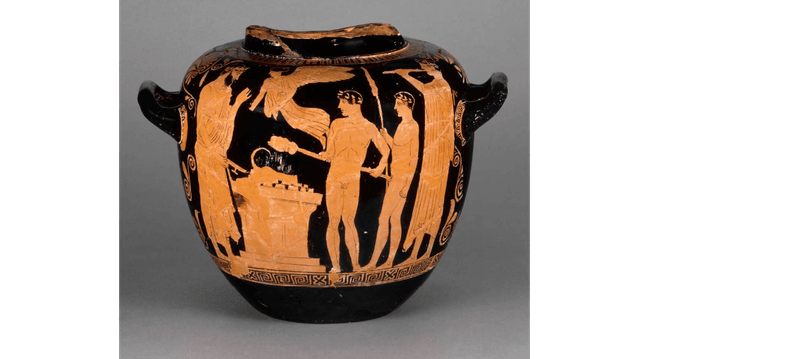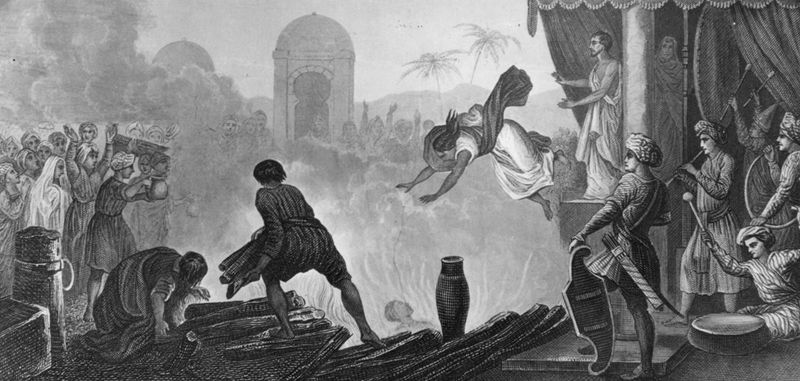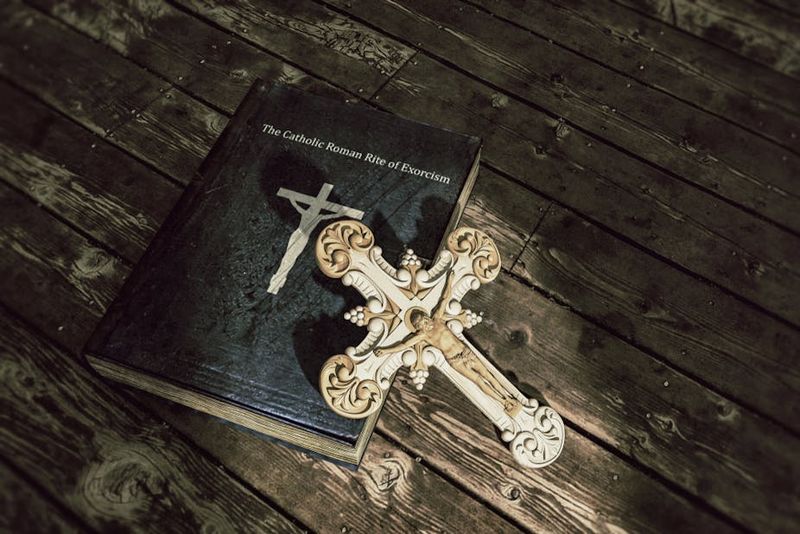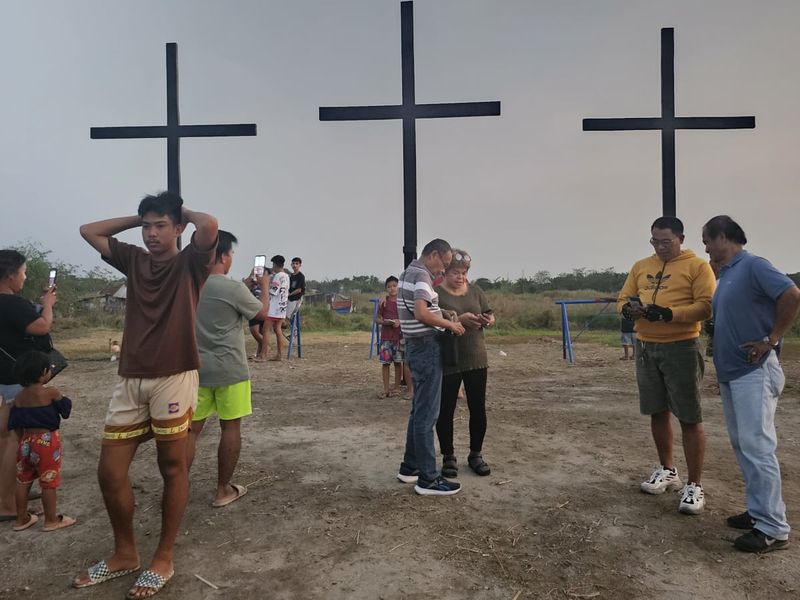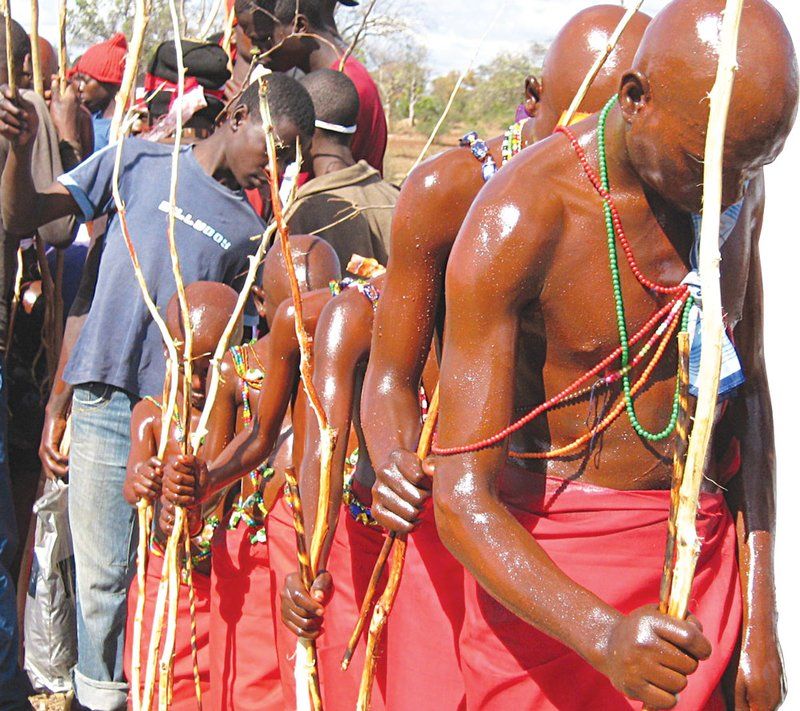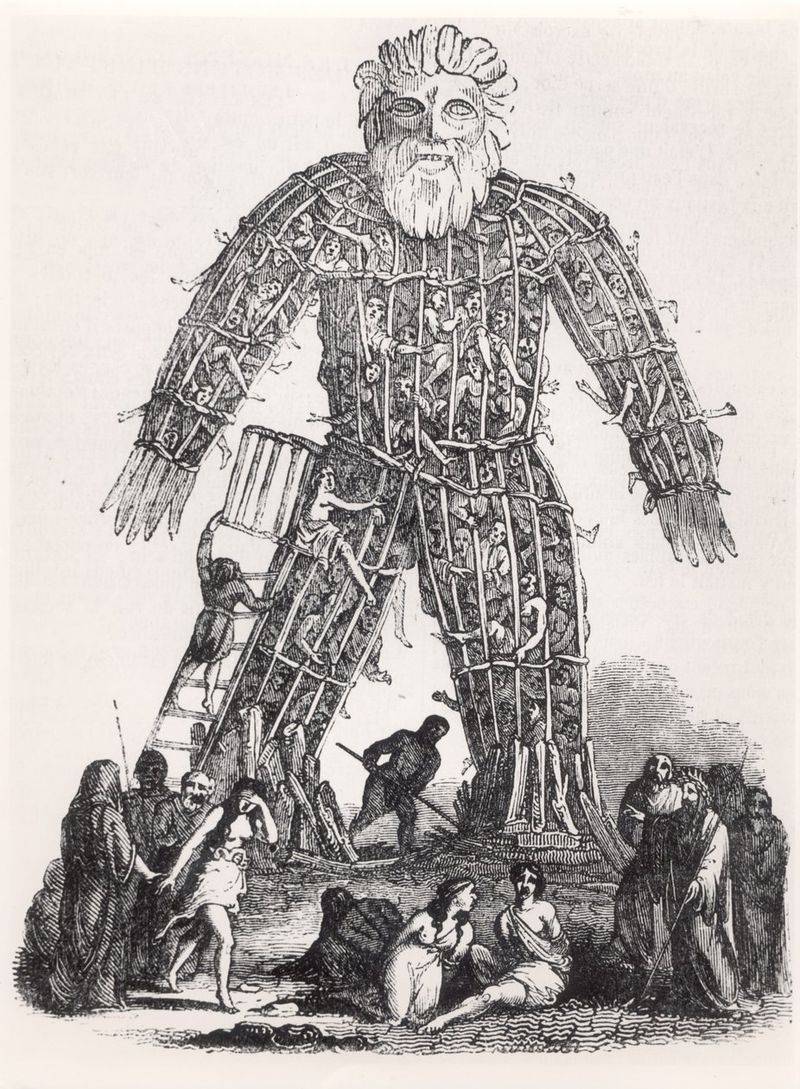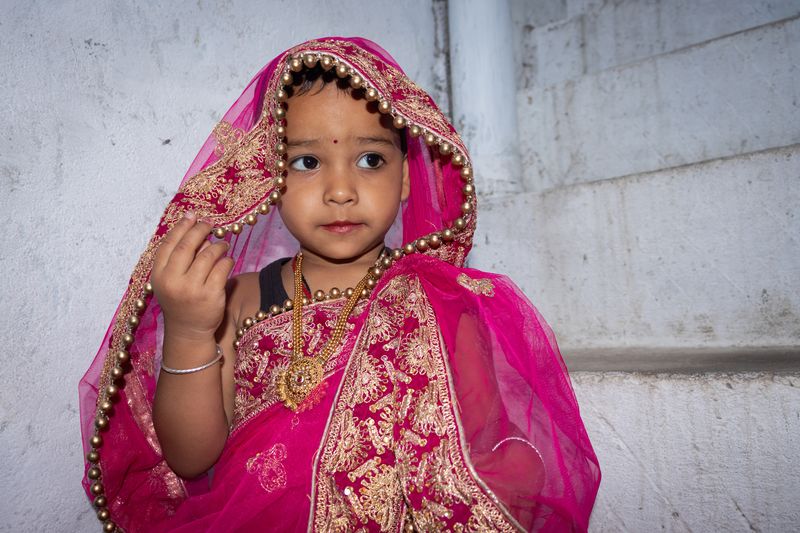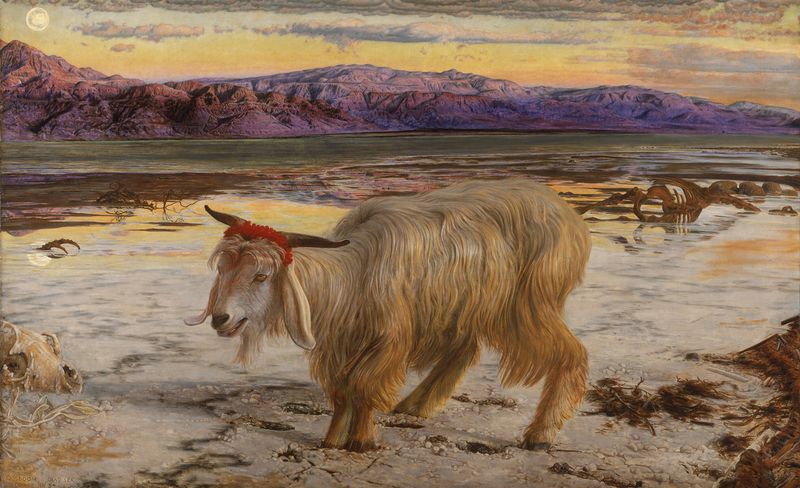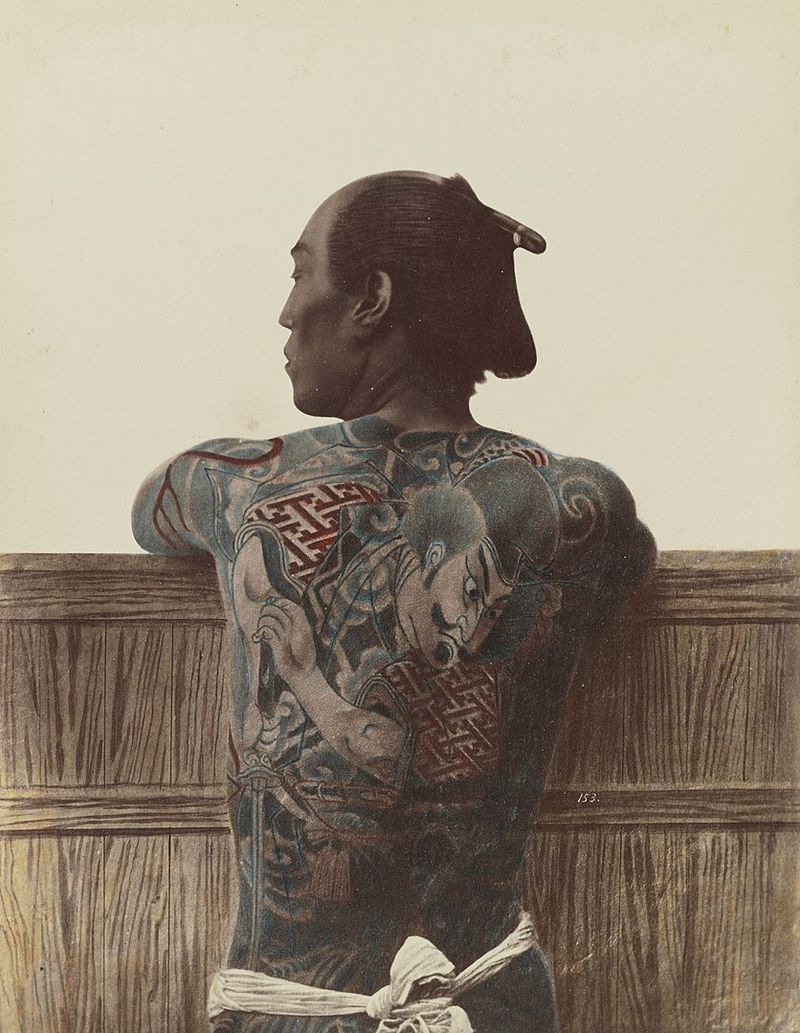From divine devotion to downright disturbing, ancient religious practices weren’t always as peaceful as we like to imagine. Many were intense, ritualistic, and in some cases—shockingly brutal. Today, most of these would violate human rights laws or result in serious criminal charges. Let’s take a deep dive into the sacred extremes that wouldn’t pass modern law books.
1. Human Sacrifice – Aztec Empire
In the Aztec Empire, human sacrifice was a deeply ingrained tradition, perceived as essential to appease the gods and ensure the world’s continued survival. Priests would remove a person’s heart atop towering temples to honor deities like Huitzilopochtli. This gruesome ritual was believed to fortify the sun and secure agricultural fertility. With a heart pulled from a live victim, the act was both sacred and terrifying.
Today, such practices would be condemned as murder, reflecting a stark contrast between ancient religious beliefs and modern ethical standards. The chilling ceremonies remain a dark chapter in human history, illustrative of extreme devotion.
2. Sati – Ancient India
Sati was a practice in ancient India where widows were expected to immolate themselves on their husbands’ funeral pyres, an act regarded as the ultimate demonstration of marital devotion. Some women chose this path voluntarily, while others were coerced or forced by societal and familial pressures.
This practice reflected the deeply patriarchal structures and religious fervor of the time. In contemporary society, sati is considered a form of ritualistic suicide or murder, and it has been outlawed for its violation of human rights. The legacy of sati continues to evoke both horror and fascination.
3. Infant Sacrifice – Carthage
In ancient Carthage, the sacrifice of infants was practiced to appease the gods, particularly Baal, during times of dire need or crisis. Historical records and archaeological evidence suggest that babies were burned alive as offerings, a practice both heart-wrenching and macabre.
These rituals were thought to bring prosperity or favor from the gods, reflecting the extreme lengths societies would go for divine intervention. In today’s world, such acts are seen as infanticide and constitute a grave violation of human rights, painting a somber picture of ancient religious extremism.
4. Temple Prostitution – Mesopotamia
In ancient Mesopotamia, temple prostitution was deemed a sacred practice, believed to invoke divine favor and fertility. Priestesses, often seen as embodying the goddess herself, engaged in sexual rituals with worshippers as part of their religious duties. These acts were meant to ensure prosperity and fertility for the community.
While considered holy in antiquity, today such practices would raise serious ethical and legal concerns, highlighting the significant shift in societal norms and religious practices. The complexity of these rituals offers a glimpse into the multifaceted nature of ancient spirituality.
5. Self-Mummification – Japanese Sokushinbutsu
Sokushinbutsu was a form of self-mummification practiced by certain Japanese Buddhist monks aiming to become “living Buddhas.” The process involved years of severe diet restriction, meditation, and eventual entombment while still alive.
This extreme ascetic practice was seen as the pinnacle of spiritual dedication, allowing practitioners to transcend the cycle of rebirth. Modern society views such acts as prolonged suicide, reflecting changing perceptions of religious devotion and human rights. The monks’ austere journey remains a testament to the lengths some will go in pursuit of enlightenment.
6. Trial by Ordeal – Medieval Europe
In medieval Europe, trial by ordeal was a common method of determining guilt or innocence, relying on divine intervention to reveal the truth. Accused individuals underwent brutal tests, such as holding hot iron or being submerged in water, with survival seen as proof of innocence.
This form of justice, often arbitrary and cruel, reflected the intertwining of religion and law. In modern times, such practices equate to torture and violate human rights, showcasing a stark evolution in legal standards. The trials remain a vivid reminder of the perils of blind faith in divine judgment.
7. Castration for Purity – Skoptsy Sect (Russia)
The Skoptsy, a Christian sect in 19th-century Russia, believed that castration was necessary to attain spiritual purity and salvation. Members voluntarily underwent this extreme procedure, convinced it would help them transcend earthly desires and achieve divine grace.
This radical belief stemmed from their interpretation of religious texts, highlighting the extent of their devotion. Today, such practices are considered severe human rights violations, illustrating a profound shift in religious and societal norms. The Skoptsy’s story serves as a sobering example of how faith can drive extreme and harmful actions.
8. Bloodletting and Self-Flagellation – Medieval Christianity
During medieval times, some Christians practiced bloodletting and self-flagellation to atone for sins, believing physical suffering could bring spiritual cleansing. These acts of penance were seen as a way to emulate Christ’s suffering and gain divine favor.
Such practices, however, often led to severe injuries and were a public health concern. Today, they are regarded as forms of self-harm, incompatible with modern views on religion and health. The rituals highlight the historical intersections of faith and physical sacrifice, revealing the intensity of medieval spiritual devotion.
9. Cannibalistic Funeral Rites – Certain Tribes
In some tribal societies, cannibalistic funeral rites were practiced to honor the deceased, with the belief that consuming parts of loved ones allowed their essence to be absorbed and preserved. This practice was rooted in deep reverence for ancestors and the spiritual connection between the living and the dead.
Today, such customs are considered desecration and are illegal in most parts of the world. The rites offer insight into the diverse ways human cultures have attempted to grapple with mortality and the afterlife, reflecting the complexity of spiritual beliefs.
10. Killing Apostates – Ancient Christianity
In ancient religious communities, apostasy—abandoning one’s faith—often resulted in severe punishment or death. Christianity enforced strict penalties for leaving the faith, viewing it as a grave betrayal.
Such measures were intended to preserve religious unity and discourage dissent, reflecting the intertwining of faith and power. Modern societies, however, uphold freedom of religion, and executing apostates is seen as a human rights violation. This shift underscores the progress made towards religious tolerance and individual freedom, contrasting sharply with past practices.
11. Burial of Servants Alive – Ancient Egypt and China
In ancient Egypt and China, it was common for servants to be buried alive with their deceased rulers, believed to serve them in the afterlife. This practice was a stark demonstration of loyalty and the hierarchical nature of these societies.
Such customs were rooted in complex beliefs about death and the continuation of service beyond the grave. Today, these acts are considered mass murder and highlight the stark differences in how human life and dignity are valued across time. The burial rites illustrate ancient views on authority and the afterlife, offering a somber reflection on power dynamics.
12. Animal Sacrifice – Ancient Greece & Rome
In ancient Greece and Rome, animal sacrifice was a central religious ritual, practiced to appease the gods and ensure communal well-being. Animals were offered on altars, with their blood seen as a potent form of communication with the divine.
These sacrifices were deeply symbolic, reflecting the societies’ complex relationships with their deities. In contemporary times, such practices clash with animal cruelty laws and ethical standards, illustrating the evolution of human attitudes towards animals. The rituals remain a fascinating testament to the spiritual traditions of ancient civilizations and their quest for divine favor.
13. Mass Suicide – Jonestown (1978)
Though not ancient, the mass suicide at Jonestown in 1978 echoes the extremities of historical religious devotion. Over 900 followers of the People’s Temple, led by Jim Jones, consumed poison in a tragic demonstration of blind obedience.
This event serves as a chilling reminder of the dangers of charismatic leadership and the vulnerability of isolated communities to manipulation. The Jonestown tragedy remains a poignant example of how belief can be twisted into destructive actions, underscoring the need for vigilance and critical thinking in religious practices.
14. Sacrificing Virgins – Various Civilizations
Sacrificing virgins was a practice in several ancient civilizations, believed to appease gods and secure favorable outcomes for the community. Young women, revered for their purity, were offered in solemn ceremonies meant to avert disasters or ensure bountiful harvests.
These rituals underscore the extreme measures societies once undertook in the name of divine intervention. Modern perspectives, however, view such practices as horrific abuses of minors and violations of human rights. The sacrifices highlight the profound impact of religious beliefs on societal norms and the lengths people have gone to honor their deities.
15. Possession Exorcisms – Global Traditions
Exorcism rituals, practiced globally, aimed to expel evil spirits believed to possess individuals. These intense ceremonies often involved physical and psychological coercion, with grave consequences for the afflicted.
While meant to restore spiritual balance, exorcisms frequently resulted in serious injuries or death, reflecting the perilous intersections of faith and fear. Today, such practices are considered criminal negligence or assault, as science provides alternative explanations for possession-like symptoms. The rituals remain a testament to the enduring human quest to understand and control the unseen forces perceived to influence our lives.
16. Self-Crucifixion – Modern Fringe Christian Groups
Self-crucifixion, practiced by some modern fringe Christian groups, involves participants nailing themselves to crosses as a form of extreme penance and imitation of Christ’s suffering. This ritual, observed during Holy Week, reflects profound religious fervor and personal sacrifice.
While seen as a demonstration of faith, self-crucifixion poses serious health risks and is illegal in many regions. The practice highlights the lengths some individuals will go in the pursuit of spiritual fulfillment, offering a glimpse into the complex landscape of contemporary religious expression and the boundaries of personal devotion.
17. Ritual Dismemberment – Some Tribal Initiations
In certain tribal societies, ritual dismemberment served as a rite of passage, marking the transition from youth to adulthood. These ceremonies often involved the removal of fingers or limbs, reflecting the profound cultural significance of sacrifice and endurance.
The acts were meant to demonstrate bravery and commitment to community values. Today, such practices are viewed as extreme bodily harm and face legal prohibition. The initiations reveal the diverse ways cultures have historically marked significant life transitions, embodying both the rich traditions and challenges of preserving cultural identity in a changing world.
18. Druidic Human Burnings – Ancient Celts
Ancient Celtic Druids conducted human sacrifices, burning enemies or criminals in giant wicker structures as offerings to their gods. The rituals were believed to ensure prosperity and appease divine forces.
These acts, blending spirituality with justice, highlight the complex belief systems of the Celts. In modern times, such practices are unequivocally condemned as murder, demonstrating the evolution of ethical standards and the protection of human rights. The Druids’ rituals remain a vivid reminder of the extremes of historical religious practices and the power dynamics inherent in ritual sacrifice.
19. Child Brides – Tied to Religious Doctrine
Child marriage, sanctioned by various religious doctrines, has been practiced across cultures, often justified by spiritual beliefs and societal norms. Young girls, some barely in their teens, were married off to older men, reflecting deep-rooted patriarchal structures and economic considerations.
Today, this practice is widely outlawed, recognized as a severe violation of children’s rights. The tradition underscores the historical intersections of religion, culture, and gender dynamics, illustrating ongoing global efforts to protect minors and promote equality. The legacy of child brides continues to challenge modern societies in balancing tradition and human rights.
20. Scapegoating Sacrifices – Ancient Israel
In ancient Israel, scapegoating involved symbolically transferring the community’s sins onto a goat, which was then sent into the wilderness as a form of atonement. While the ritual itself was non-lethal, interpretations included more violent acts, such as killing the scapegoat to ensure the removal of sin.
This practice highlighted the community’s desire for purification and divine favor. Modern interpretations emphasize the symbolic act without harm, reflecting shifts in religious practices towards more humane expressions of faith. The concept of scapegoating remains relevant, illustrating enduring themes of guilt, forgiveness, and redemption.
21. Forced Religious Tattoos – Ancient Slavery
In ancient times, slaves were often branded with tattoos representing their owner’s gods, a practice that reinforced control and religious indoctrination. These forced markings served as a constant reminder of their servitude and the pervasive influence of religion in justifying social hierarchies.
Such practices are now considered abuse and are illegal, highlighting the progress in human rights and personal autonomy. The tattoos reveal the complex interplay between faith, power, and identity in ancient societies, as well as the enduring struggle for freedom and dignity. The legacy of forced religious markings continues to inform contemporary discussions on bodily autonomy.

